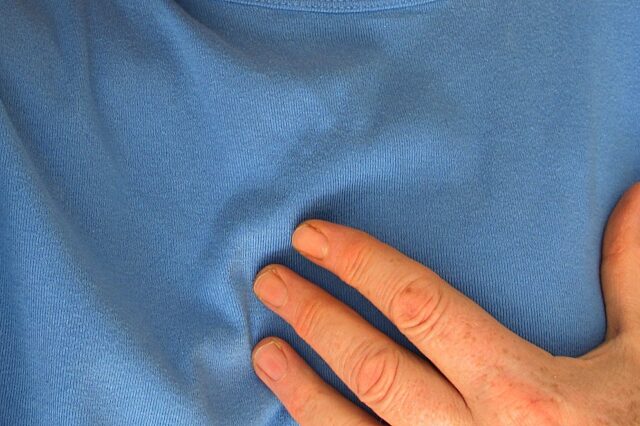Go Red for your heart on National Wear Red Day with UF Health

Every February, UF Health participates in the American Heart Association's National Wear Red Day campaign, promoting awareness and prevention of heart disease and stroke. The leading cause of death for both men and women is heart disease. Fortunately, with education and changes in one’s lifestyle, both of these risk factors could be prevented.
Cardiac arrest can occur in someone who may or may not have been diagnosed with heart disease. It is important to know the necessary steps to take if someone you know experiences sudden cardiac arrest. The use of mouth-to-mouth, hands-only CPR and automated external defibrillators, or AEDs, can significantly increase the chance of survival.
“You can be the link between someone surviving and returning to their loved ones,” said Carla Schmidt, B.S.H., CCCP, C.V.T., UF Health Chest Pain Center STEMI coordinator. “Two small steps can have a huge impact in someone’s life. We encourage everyone to learn how to save a life and to teach their kids and families how to save a life, because they might saving the life of someone they know.”
Know the facts about hands-only CPR and AEDs:
Hands-only CPR
- Approximately two-thirds of cardiac arrests occur outside of a hospital. CPR can double or triple a victim's chance of survival, but bystander CPR rates only average about 40.1 percent with a survivor rate of only 9.5 percent.
- You can save a life in two simple steps with hands-only CPR:
- First step – call 9-1-1
- Second step – push hard and fast at the center of the chest
- Use the song “Staying Alive” by the Bee Gees as a compression guide to help keep the victim’s blood and breath moving properly.
- More than 80 percent of sudden cardiac arrests happen in private residential settings; learning CPR can prepare you for these moments.
- Hands-only CPR can double or even triple the survival rate of a cardiac arrest victim.
AED
- An AED is a computerized device that detects abnormal heart rhythms and notifies a rescuer if the victim requires a shock by guiding them through the steps using voice prompts, lights and text messages.
- About 64 percent of Americans have never seen an AED.
- A victim’s chance of survival decreases by 7 to 10 percent for every minute that passes without defibrillation.
- Out-of-hospital cardiac arrest patients are three times more likely to survive in communities that have comprehensive AED and CPR training programs in place
Learn more about CPR methods, CPR for infants and CPR for adults.